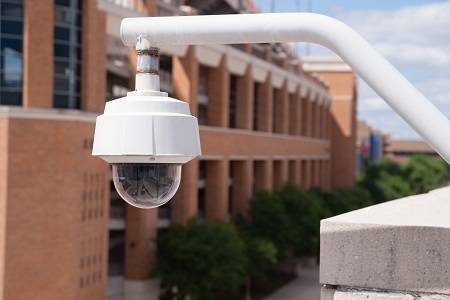What are the primary layers of security to be implemented in educational facilities, focusing on perimeter protection, access control and video surveillance
A rash of active shooter and other security incidents at schools has prompted parents and administrators to examine and improve campus security. Among the many options for enhancing security, one of the fastest ways to mitigate risk is to implement policies and procedures that keep unauthorised visitors from getting on the campus in the first place.
From a design standpoint, security should be thought of in concentric layers, and the perimeter is that first layer of defence. Schools need to prevent unwanted intruders from entering the secure space that has been defined for students and staff. Whether that’s a fence perimeter or the exterior of the building, it’s the primary line of defence in protecting students and faculty.
In recent years, we have seen more investments in physical security in the form of gates, fences, vehicle barriers and other perimeter protection systems to ensure that campuses are not easily accessible. At its core, perimeter security has more to do with understanding and controlling patterns, not just locking doors.
Each educational setting faces its own set of challenges while solving their unique requirements. The State of Florida, for example, has the Jessica Lunsford Act, or Jessica’s Law, which requires that before stepping onto campus, new staff have to go through an extensive background check. In other words, you have to be approved to carry a badge before you can even think of walking onto campus. This is just one example of how schools in some areas have implemented policies and procedures to mitigate risk externally before potential offenders get on campus.
Perimeter protection
Fencing is often a starting point for establishing perimeter security. And in the higher education space, fencing often extends from the campus all the way through to other facilities like sororities and dorms. Arizona State University, for example, uses perimeter fencing systems around the outside of sororities to prevent unwanted trespassers from entering that space. Those gates and access points are controlled by a mix of mechanical and electromechanical locking devices. With many options to choose from with varying levels of complexity, these devices simply control and limit who has access to secured areas.
Even within fencing, there are a variety of options. From the low end of the spectrum, using a mechanical key to control a padlock that secures a chain to a gate, to standalone keypad locks that function independent of the access control system at the school, all the way to wired and wireless integrated electromechanical locking solutions that can be tied into an access control system. One of the more common ways that pedestrian gates with rim exit devices, electronically controlled, are used is with surface mounted electric strikes. This allows for free egress from the space, but ties the entrance to the access control system.
Read the full article in our February issue here: February 2022 Single Issue – (securitybuyer.com)
Media contact
Rebecca Morpeth Spayne,
Editor, Security Portfolio
Tel: +44 (0) 1622 823 922
Email: editor@securitybuyer.com













